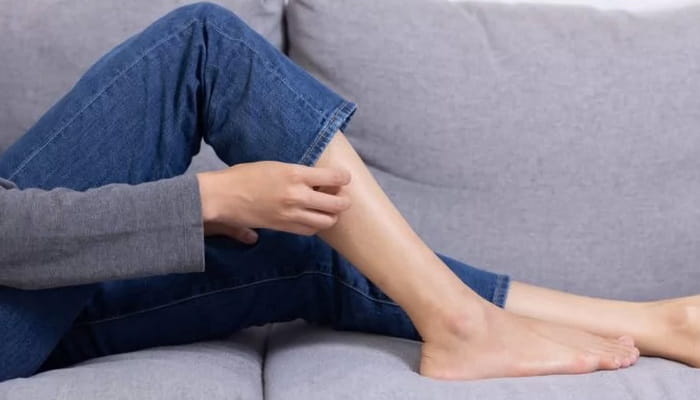The rash on the legs is most often caused by contact with an allergenic factor, but may have other causes, so it should not be left unaddressed. What can cause a leg allergy? How can this be prevented?
Leg rash – What does it look like, and what are its causes?
A rash on the legs most typically results from skin contact with a strong allergen. They take the form of numerous pimples, pa pules, urticaria and even, in extreme cases, fluid-soaked bubbles. Another cause of rash may be inflammation of hair follicles as a result of depilation, then skin lesions appear at the site of hair growth, additionally accompanied by severe redness and itching.
Pilgrims or runners usually have a rash on their feet called asphalt or pilgrimage disease. It is formed as a result of contact of the skin of caviar and shins with warm asphalt vapors containing many substances harmful to the skin condition. As a result, smooth red spots or erythemas appear on the skin of the lower legs, which are very painful and in extreme cases make it impossible to move. Sometimes the appearance of a rash on the legs is associated with a hit on the skin of clothes with which the powder was not thoroughly washed away.
Sensitization on the legs results from skin contact with various allergenic factors. We include in their number:
- cosmetics, soap, and wash gels that have not sufficiently washed off the surface of the epidermis;
- not fully washed detergents or other detergents on clothing;
- excessive contact of sensitive leg skin with some tissues if they are too close to it;
- strong sun rays;
- hot asphalt vapors.
In addition, a rash on the legs may be one of the first symptoms of food allergies, i.e., contact with food allergens. It can also be a side effect of some medications, such as antibiotics.
Child’s leg allergy
The appearance of a foot rash in children is often a diagnostic problem, since pimples can be a sign of a bacterial, viral or parasitic infection, but are most often the result of allergies to numerous allergens contained in these foods, medicines or cosmetics.
Allergic symptoms can most typically appear in the appearance of pimples, spots, pa pules or bubbles on the child’s legs after contact with the allergen. Therefore, it is extremely important to carefully monitor the child and limit contact with the substance or the cause that caused him an allergic reaction as early as possible. In infants and young children, allergic urticaria is most common, which occurs very quickly after contact with the allergen, but also disappears after a few hours. If the pimples do not disappear, the child should be referred to a specialist as soon as possible to make an accurate diagnosis and start treatment.
How to deal with a rash on your legs?
Usually, rashes on the legs are of a contact nature, so most often their symptoms disappear spontaneously after a complete decrease in contact with allergenic factors. Treatment consists in the use of creams and ointments containing glucocorticosteroids that inhibit the development of an allergic reaction and reduce itching. In addition, you should take oral antihistamines to relieve the symptoms of the rash and prevent it from reappearing. Additionally, for long trips, it is worth taking softening and moisturizing creams available in pharmacies that will speed up skin regeneration.
If the rash on the legs is accompanied by other skin lesions or does not go away with the main drugs. This article is extremely informative in nature, in sovetplus.com we have no right to prescribe any treatment or make any diagnosis. It is necessary to consult a doctor in case of any type of condition or discomfort.
If you want to read more articles similar to “Leg Rash – Causes and Treatment,” we recommend that you visit our Family Health category.








